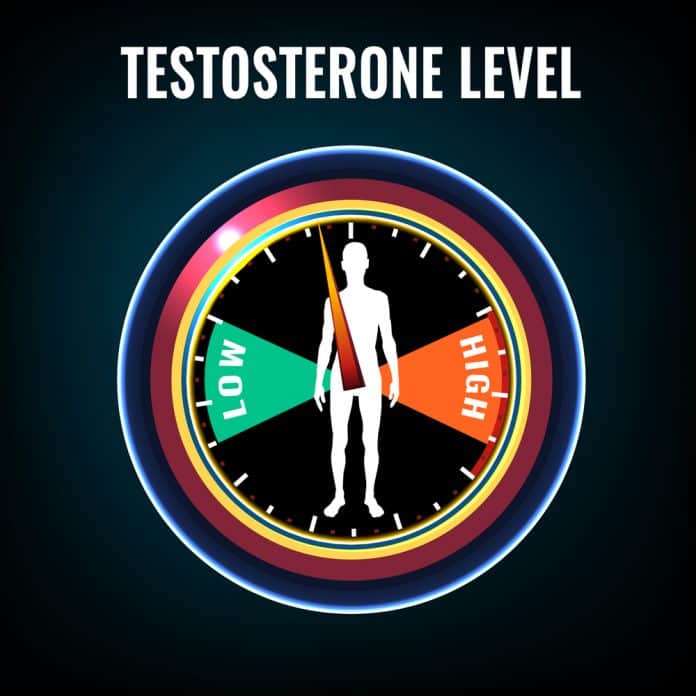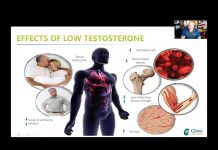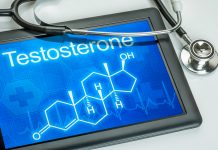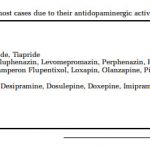
Table of contents
- A brief introduction to testosterone and its properties/benefits
- Serum testosterone assays
- Types of testosterone
- Types of testosterone assays
- How is testosterone measured?
- Wang’s analysis of testosterone assays
- 4 Types Of Testosterone Tests You Can Buy Today
- Why should you test your testosterone levels?
- How to get a testosterone test?
A brief introduction to testosterone and its properties/benefits
Testosterone is the most important male sex hormone and responsible for the correct functioning of multiple body processes.
This anabolic steroid is directly involved in the development of reproductive organs in men as well as the development of secondary male sexual characteristics.
Testosterone plays an important role in the lives of women too.
Inadequate amounts of testosterone can lead to numerous health issues such as low bone density (and susceptibility to fractures), poor sex drive and lack of concentration.
Normal testosterone levels in men are between 300 ng/dL and 1,000 ng/dL. Bodybuilders might have higher testosterone levels as a result of increased muscular mass.
Normal testosterone levels in women are usually between 15 ng/dL and 70 ng/dL. This number varies depending on various factors such as the moment of the day, mood, diet, exercise level and more.
However, certain men might have low levels of testosterone (under 300 ng/dL) and experience various symptoms such as fatigue, lack of sexual desire and the development of male breasts (gynecomastia).
Testosterone replacement therapy might be useful for men who have T levels around 150 ng/dL. This treatment will help to raise the testosterone levels to normal values.
Inadequate amounts of testosterone can also impair muscle development and slow down one’s progress in the gym. Men usually have 40 times more testosterone than women, and it’s important to keep T levels in the normal range to ensure proper muscle growth.
Measuring the testosterone level isn’t an easy task.
That’s because this hormone can be bound to certain proteins in the body and measuring it becomes very difficult when it’s outside the normal ranges.
For example, it’s relatively easy to determine the exact testosterone level of a healthy eugonadal man, but not that easy if he’s hypogonadal and it’s testosterone levels are dangerously low.
To measure low T concentrations in men, women and prepuberty children, more sensitive tests are required.
Scientists and medical professionals have managed to create a couple of reliable measuring methods for testosterone.
These are called testosterone assays.
Serum testosterone assays
According to the dictionary, the word “assay” refers to the testing of a particular material, ore or substance to find out its composing ingredients.
Serum testosterone assay refers to accurately measuring the testosterone levels in the body of a male or female.
Accuracy is important because it directly impacts the diagnosis of a particular disease or health complication.
Endocrinology is the discipline responsible for measuring hormone levels in the body.
It encompasses a wide variety of assays which help the clinician confirm a diagnosis for a patient.
For example, testosterone assays are used to determine if a male patient has hypogonadism or not.
Hypogonadism consists of reduced gonad activity. Men diagnosed with hypogonadism usually have low testosterone levels and experience different symptoms such as low sex drive and gynecomastia (man boobs).
Testosterone assays are also used to determine if certain boys have delayed puberty onset and to diagnose androgen deficiency.
When circulating testosterone levels are very low, the sensitivity of some assays is diminished. That’s why it is necessary to pick the right testosterone assay to accurately determine circulating T levels.
Types of testosterone
The majority of circulating testosterone in the bloodstream is bound to SHBG which is the sex hormone binding globulin. Testosterone can also be weakly bounded to albumin which is a water-soluble protein.
The albumin-bound testosterone combined with free testosterone makes up for approximately 35% of total testosterone levels.
This is also known to be biologically active testosterone.
Hyperthyroidism and other factors which influence SHBG can lead to changes in the amount of biologically active testosterone.
Types of testosterone assays
Measuring the testosterone levels in one’s body is not that easy.
One way to do that is by using Isotope dilution mass spectrometry. This assay measures total testosterone levels.
Laboratories also use direct chemiluminescent immunoassays. However, these assays are less accurate when testosterone concentrations are too low.
Liquid chromatography-tandem MS (mass spectrometry) is also used as well as gas chromatography-MS for more accurate results, particularly when testosterone levels are at the low and high extremes.
Measuring free testosterone is done after it has been separated from the protein-bound forms.
This can be done using equilibrium dialysis or ultracentrifugation.
Equilibrium dialysis is the most common method, and it involves introducing testosterone isotopes into a patient sample.
The free testosterone concentration is estimated based on the distribution of isotopes in the dialysis membrane.
Measuring the bioavailable testosterone can be done using ammonium sulfate which influences the testosterone bound to SHBG.
Assessing the testosterone levels began approximately 30 years ago.
Tests were done on small samples of blood, but their accuracy was somehow limited.
Modern testosterone assays are more sensitive, require a smaller sample of serum and are more affordable. They can be done using nonradioactive methods in reference labs.
How is testosterone measured?
Up to 98% of the testosterone which can be found in the bloodstream is bound to proteins such as albumin and SHBG. Just about 2% is free.
Albumin-bound testosterone and free testosterone are known as bioavailable, and they can easily be used by tissues for androgen action.
On the other hand, total testosterone can be measured using nonradioactive immunoassay and chemiluminescent detection.
These methods offer accurate results if the male patient has testosterone levels in the normal range such as 300-1000 ng/dL.
However, these assays recorded low limits of testosterone of approximately 132 ng/dL which is not normal in healthy men.
Clinicians have wondered why this happens and how they can improve the accuracy of testosterone assays when T concentrations are very low.
When it comes to total testosterone assays, the gold standard is a steroid-free serum interacting with gravimetrically-determined amounts of testosterone.
Independent measuring methods are also used such as liquid or gas chromatography with mass spectrometry.
For women, highly sensitive tests are necessary to determine total and free testosterone levels because women have much lower amounts of testosterone in the bloodstream in comparison with men.
Dr. Wang’s analysis of testosterone assays
In a paper published in 2004, Dr. Wang and her colleagues compared multiple testosterone immunoassays (both manual and automated ones) with liquid chromatography-tandem mass spectrometry.
The results were very accurate for the latter option, and the test was performed on serum samples from patients with different testosterone levels (ranging from under 150 ng/dL to 1,500 ng/dL).
This means that most of the automated and manual assays were accurate when compared with LC-MSMS, but some of the tests provided inaccurate results.
The authors of the paper concluded that most manual and automatic testosterone immunoassays are ideal for differentiating eugonadal men from hypogonadal men, but they weren’t accurate for women or children who haven’t reached puberty yet.
It’s important to notice that these automated and manual testosterone immunoassays are compared with gold standards of adult male reference ranges.
These ranges are set by individual laboratories and are usually monitored by the College of American Pathologists.
That’s why you’ll find several testosterone tests on the market. It’s important to get the right one to obtain the most accurate results.
4 Types Of Testosterone Tests You Can Buy Today
There are four different testosterone assays you can choose from to accurately determine the amount of testosterone in your bloodstream.
#1 – TESTOSTERONE Total and Free (Regular)
This test is ideal for people who have testosterone levels in the normal ranges.
It measures total and free testosterone using direct analog/radioimmunoassay (for free T) and electrochemiluminescence immunoassay (for total T).
On the other hand, if you know you have very low testosterone levels (you have hypogonadism and testosterone levels below 150 ng/dL) or you have very high testosterone levels (you are a bodybuilder with T levels over 1500 ng/dL) then you might want to use the LC/MS test because it’s more accurate.
If your testosterone levels are very high, the test will show above 1500 ng/dL, not the exact number (such as 1,700 or 1,800).
#2 – Testosterone Free and Weakly Bound (Bioavailable Testosterone)
Bioavailable testosterone can be used for steroid-receptor interaction.
This test measures the amount of free testosterone and weakly bound testosterone in the bloodstream.
The test doesn’t look at the testosterone bound to SHBG because this type is biologically inactive as it has a high binding affinity.
On the other hand, weakly bounded testosterone is usually derived from albumin, and it has a low affinity which means that it can quickly dissociate and become available for interaction.
#3 – Testosterone, Free, Equilibrium Ultrafiltration With Total Testosterone, LC/MS- No Upper Limit
This test doesn’t have any upper limit for either type of testosterone such as free, total and bioavailable.
It uses more complex measuring assays such as liquid chromatography-tandem mass spectrometry to accurately determine testosterone levels.
However, this test is more suitable for bodybuilders who are known to have very high testosterone levels.
If you are not into bodybuilding or you think you have below normal testosterone levels then this test is not ideal for you.
There are other tests which are more economical and can be used to determine your testosterone levels more accurately.
If you are on testosterone replacement therapy, you might want to choose a test which has no upper limit on total testosterone and up to 50 ng/dL limit on free testosterone.
An even more affordable test for people on testosterone replacement therapy has an upper limit of 1,500 ng/dL on total testosterone and 50 ng/dL limit on free testosterone.
#4 – TESTOSTERONE, Free and Total, LC/MS Assay (T > 1,500 ng/dL)
If your testosterone levels are very low (both men and women) then this test is ideal for you.
The test looks at testosterone concentrations under 150 ng/dL or above 1500 ng/dL for total testosterone.
The free testosterone is capped at 50 ng/dL for this test, but there are other tests with no upper limits for total and free testosterone if that’s what you’re interested in.
Why should you test your testosterone levels?
Measuring the testosterone levels becomes increasingly popular nowadays, thanks to direct-to-consumer labs which are affordable and easy to use.
Males and females alike can buy one of the tests described above and determine the actual amounts of testosterone in their bloodstream.
But why is this a good idea?
First of all, if you have common testosterone deficiency symptoms such as fatigue or low sex drive then measuring your testosterone levels is highly recommended.
This will help you decide if indeed a lack of testosterone is the problem and whether you should try testosterone replacement therapy or not.
Testosterone tests give you a broader insight when it comes to your hormonal health.
Secondly, if you’re on testosterone replacement therapy already, the results of the test might provide good feedback on your progress.
The clinicians who conduct these tests can give you useful pieces of advice such as how often to take testosterone gels or injections, whether you should reduce or increase the dosage, etc.
If you’re a bodybuilder, keeping your testosterone levels in check also helps you monitor your progress.
After all, testosterone is vital for muscle development, and if you have sufficient amounts of it, you’ll ensure muscle growth in the long run.
Testosterone is important for women too. This hormone is linked to mental alertness, good mood and increased sex drive.
Testosterone deficiency in women can also lead to low productivity at work and poor physical performance while in the gym.
Numerous advancements in the medical field coupled with improved testing devices make measuring testosterone levels a more affordable and accurate process.
How to get a testosterone test?
Visit Discounted Labs , pick your favorite testosterone assay, and you’ll be able to get your results in a few business days.
You can also order other blood tests to check your glucose levels, cholesterol, triglycerides, blood count and more!

















Excellent article. Explains much of what men and women need to know. Thank you.